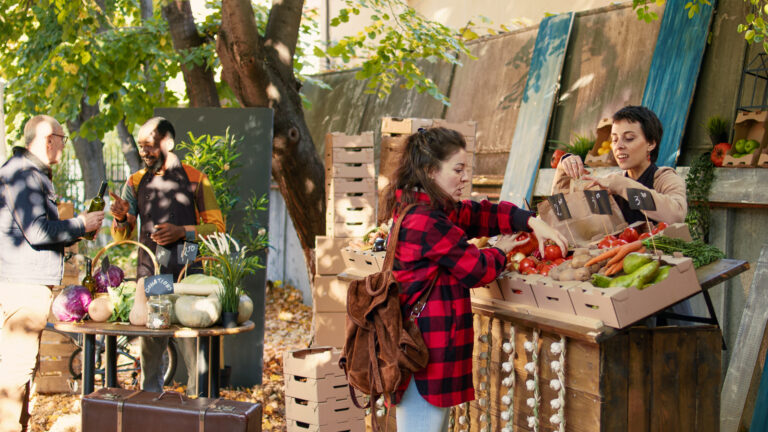Theme
Ecological Design, Food Sovereignty, Biodiversity
Activity Duration
2 hours (can be extended across multiple sessions)
Group Size
Individual, pairs, or design teams (3–4 participants)
Objectives
- Introduce forest garden concepts and multi-layered ecosystems
- Develop spatial awareness and ecological observation
- Apply design thinking to create a resilient, productive space
- Foster creativity and understanding of species interdependence
Description
In permaculture, a forest garden is one of the most powerful expressions
of working with nature. It mimics a natural woodland, but every layer is
filled with plants that are useful to people, animals, and the Earth. This
activity invites youth to step into the role of regenerative designers and
imagine what it means to co-create abundance.
A forest garden is not just about food — it’s about biodiversity, soil
regeneration, water conservation, and community resilience. The design
follows the seven layers of a natural forest: canopy, sub-canopy, shrubs,
herbs, ground cover, root crops, and climbers. This activity introduces
these layers and supports youth to visualise how they interact to create a
living system.
Even if you don’t have land to plant a forest garden, this exercise
teaches principles of ecological design, observation, and systems thinking.
It fosters a deep sense of interconnection and inspires creative solutions to
food and climate challenges.
As a facilitator, your role is to open the door to imagination while
grounding participants in realistic site conditions and plant relationships.
Encourage them to think about native species, climate, water movement,
and how people and wildlife interact with the landscape. This activity can
be adapted for rural, urban, and even balcony or schoolyard contexts.
Materials/Tools
– WS6.1 Forest Garden Design Template (1 per participant or team)
– WS6.2 Plant Layer Reference Guide (1 per group or participant)
– Colour pencils or markers
– Rulers and drawing tools
– Natural materials (leaves, twigs) for model making (optional)
– Reference images or eld guidebooks
– Flipchart or whiteboard (for final presentations)
RESOURCE WS6.1: Forest Garden Design Template
An A3 layout including:
Orientation box (sun, slope, wind, water)
Blank circular or rectangular plot with space for layered zones
Icons to represent each plant layer
Colour legend and key for labels
Mini legend: wildlife zone, compost, path, water
Reflection space: “What relationships do you see between these plants?”
RESOURCE WS6.2: Plant Layer Reference Guide
Seven sections matching forest garden layers
Each section includes:
Plant type examples (global + native/local suggestions)
Ecological function (e.g. nitrogen xing, pollinator support)
Edibility/Medicinal use
Companion notes (what grows well together)
Icons for quick match
Printable and usable as a reference during design, this resource encourages
thoughtful choices and storytelling through plants.
Space (indoor, outdoor,
settings…)
Indoors (for drawing, planning, presentation)
- Optional outdoor walk
for site inspiration and observation
Structures/steps (timing)
1. Introduction – Present forest garden concept and 7-layer structure using
visuals and WS6.2. (15 mins)
2. Context Brainstorm – De ne site conditions (real or imagined), note
sunlight, slope, water, climate. (10 mins)
3. Design Planning – Distribute WS6.1. Teams map plant zones layer-by-
layer. (45 mins)
4. Optional Model Making – Use paper or natural items to build a 3D
model. (20 mins)
5. Group Presentations – Teams share their design and explain key
choices. (20 mins)
6. Re ection – Ask: “Which plant would you be in this garden and why?” (10
mins)
Evaluation System/Tools
– Completion of WS6.1 with layered, well-thought-out design
– Use of native or appropriate species noted in WS6.2
- Team presentation
that demonstrates understanding of interrelationships
– Creativity, ecological logic, and clarity of purpose in design outputse
This activity can connect to:
Living Systems Role Play



